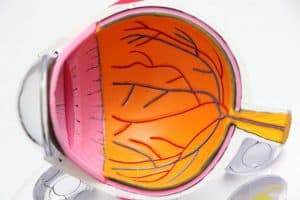Featured Products
- In-Stock Tumor Cell Lines
- Human Orbital Fibroblasts
- Human Microglia
- Human Pulmonary Alveolar Epithelial Cells
- Human Colonic Fibroblasts
- Human Type II Alveolar Epithelial Cells
- Human Valvular Interstitial Cells
- Human Thyroid Epithelial Cells
- C57BL/6 Mouse Dermal Fibroblasts
- Human Alveolar Macrophages
- Human Dermal Fibroblasts, Adult
- Human Lung Fibroblasts, Adult
- Human Retinal Muller Cells
- Human Articular Chondrocytes
- Human Retinal Pigment Epithelial Cells
- Human Pancreatic Islets of Langerhans Cells
- Human Kidney Podocyte Cells
- Human Renal Proximal Tubule Cells
Primary Cells
Explore Products



 Human Retinal Pigment Epithelial (HRPE) Cells are primary epithelial cells isolated from the retina of healthy human donors via collagenase digestion. These cells form a monolayer of polygonal cells rich in pigment granules and exhibit microvillous projections that interact with photoreceptor outer segments, supporting phagocytic function. HRPE cells maintain the outer blood-retina barrier and are essential for retinal homeostasis, nutrient transport, and visual cycle processing. Dysfunction of HRPE integrity is implicated in retinal degenerative diseases such as age-related macular degeneration (AMD), retinitis pigmentosa (RP), and Stargardt’s disease. HRPE cells express RPE65 and CRALBP, detected by immunocytochemistry or qPCR. Early passage HRPE cells generally maintain a diploid karyotype and are not immortalized. They are tested negative for mycoplasma, bacteria, yeast, fungi, HIV-1, HIV-2, HTLV-I, and HTLV-II, ensuring biosafety compliance.
Human Retinal Pigment Epithelial (HRPE) Cells are primary epithelial cells isolated from the retina of healthy human donors via collagenase digestion. These cells form a monolayer of polygonal cells rich in pigment granules and exhibit microvillous projections that interact with photoreceptor outer segments, supporting phagocytic function. HRPE cells maintain the outer blood-retina barrier and are essential for retinal homeostasis, nutrient transport, and visual cycle processing. Dysfunction of HRPE integrity is implicated in retinal degenerative diseases such as age-related macular degeneration (AMD), retinitis pigmentosa (RP), and Stargardt’s disease. HRPE cells express RPE65 and CRALBP, detected by immunocytochemistry or qPCR. Early passage HRPE cells generally maintain a diploid karyotype and are not immortalized. They are tested negative for mycoplasma, bacteria, yeast, fungi, HIV-1, HIV-2, HTLV-I, and HTLV-II, ensuring biosafety compliance.